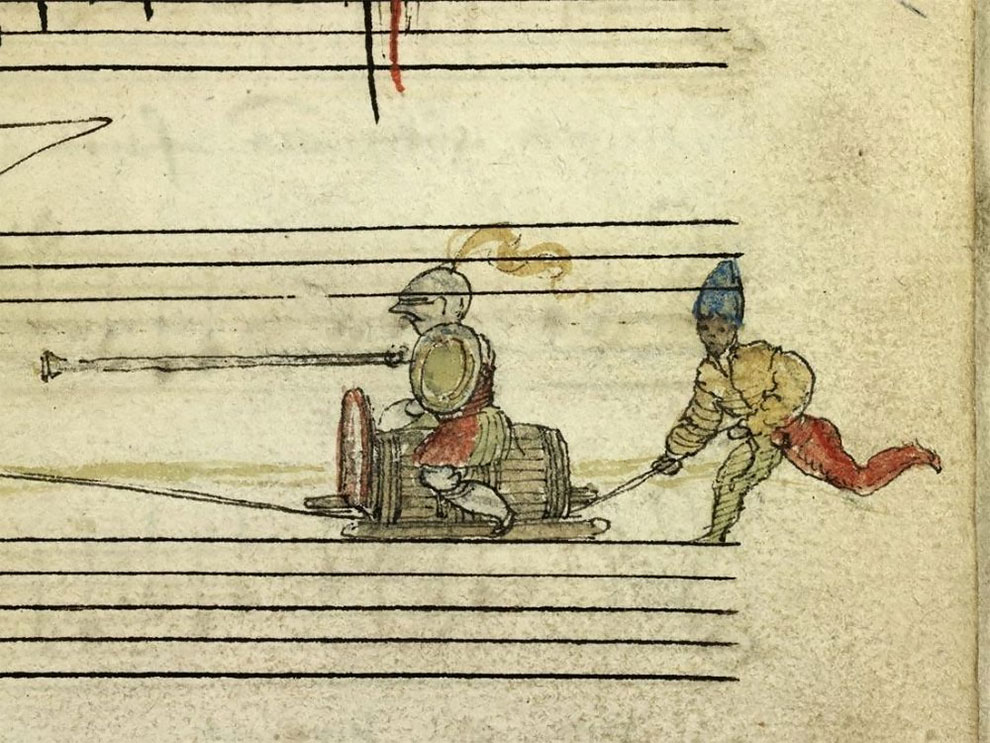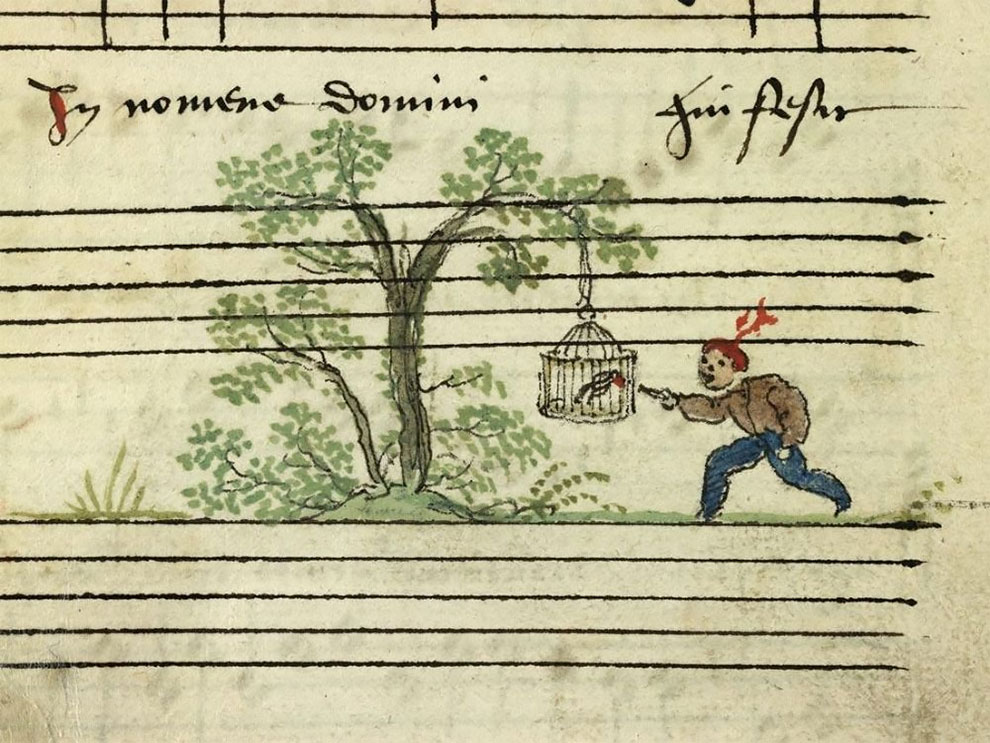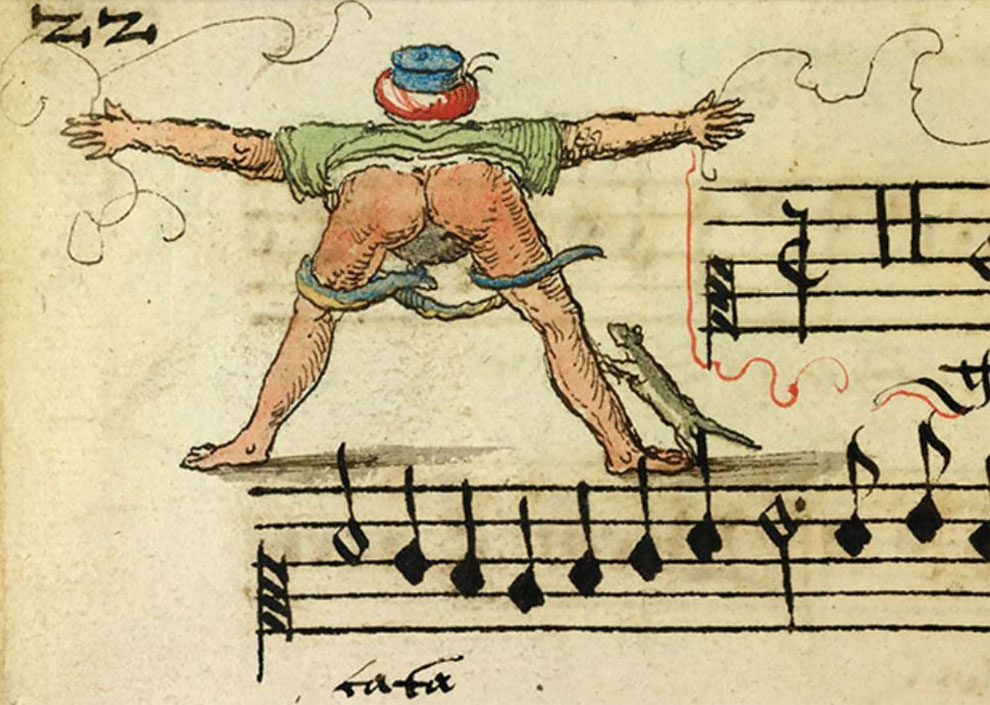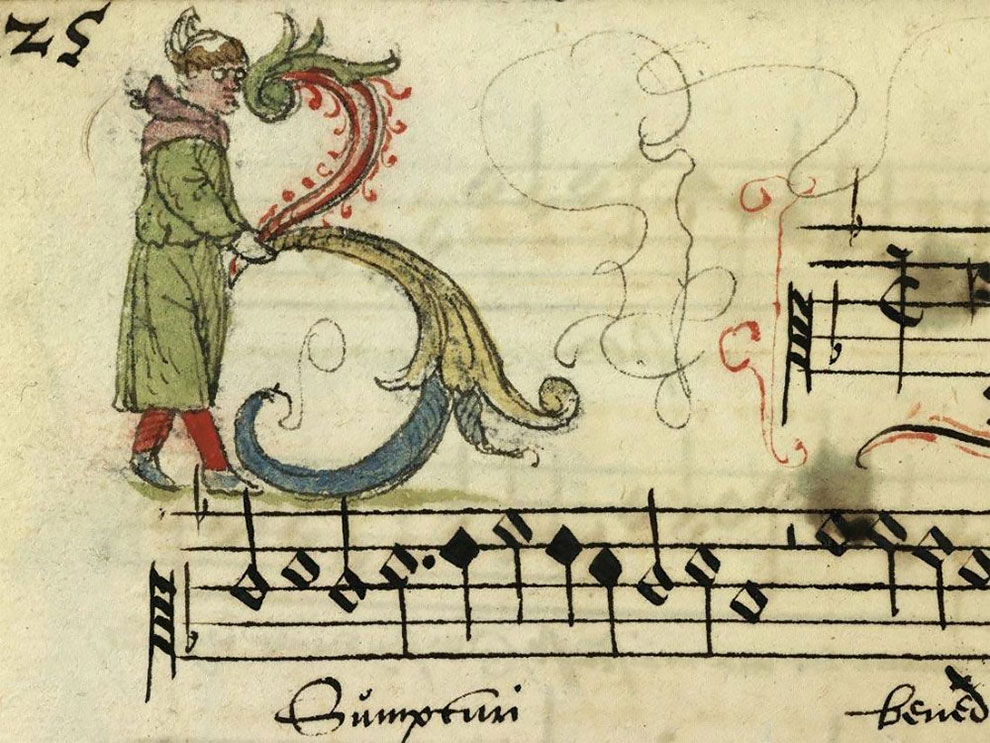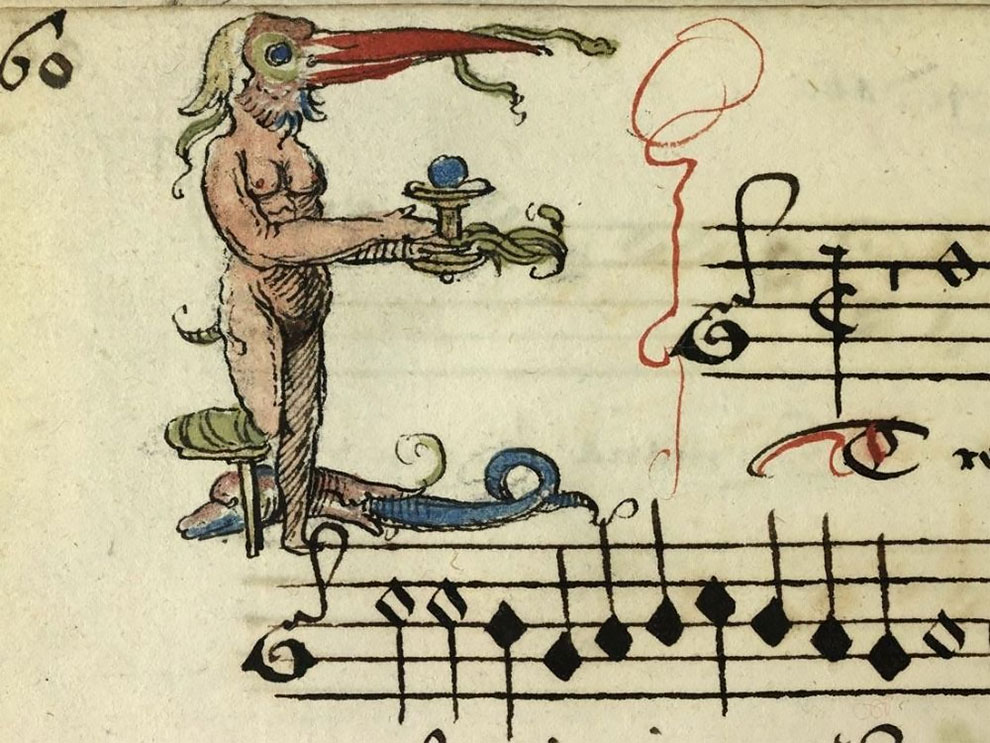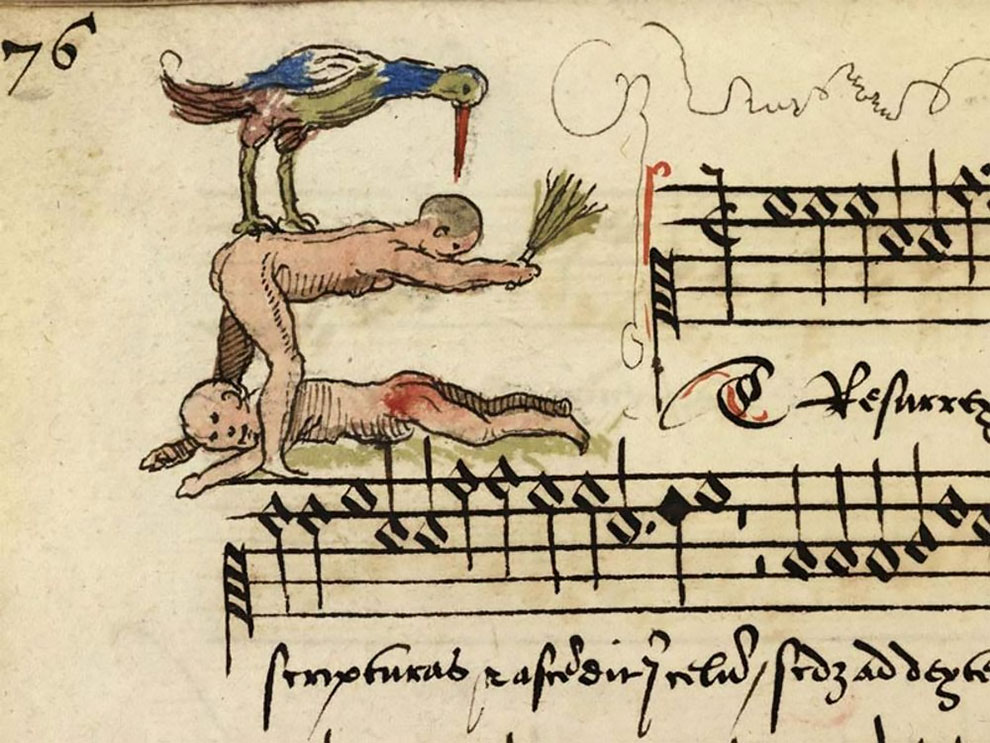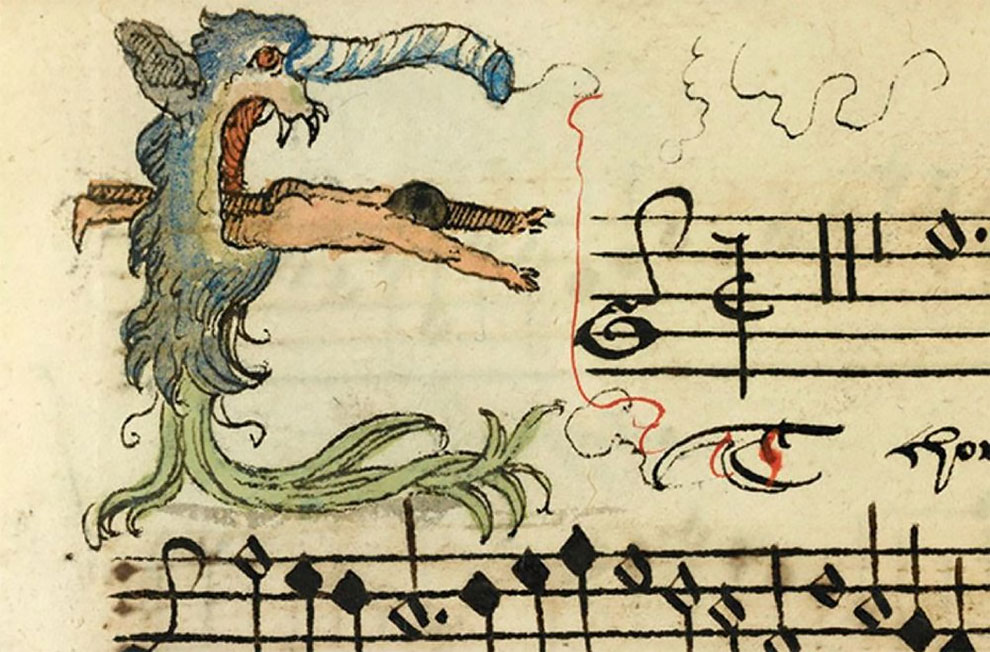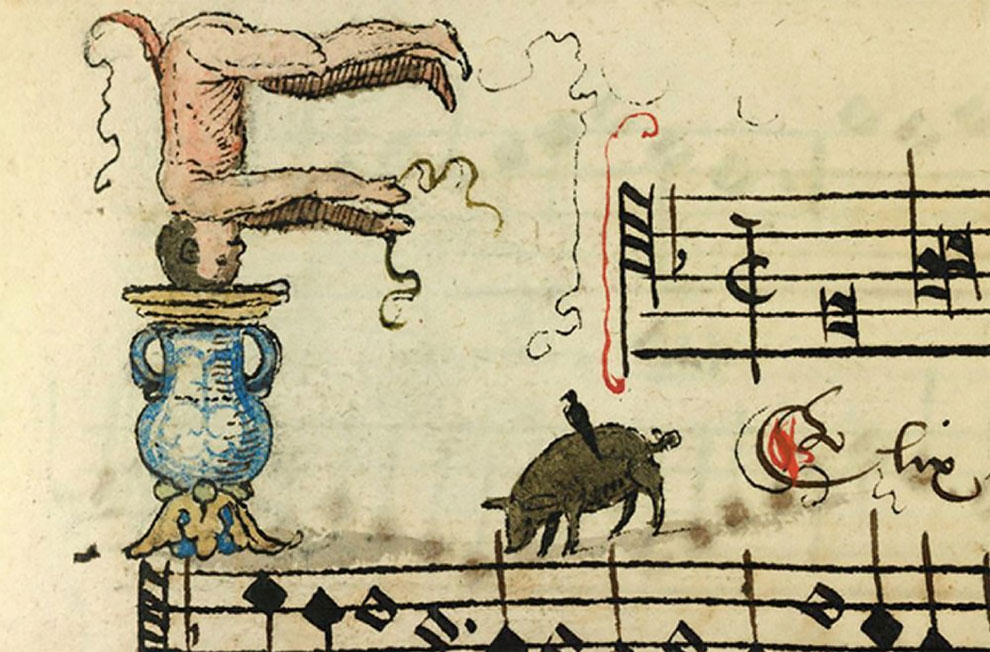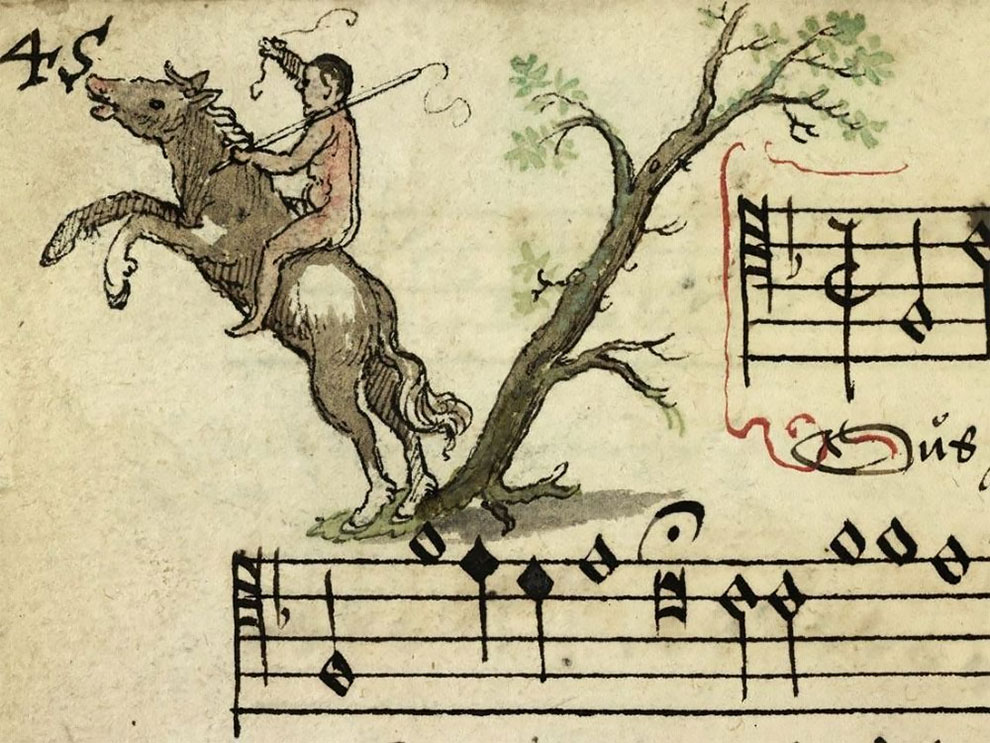Grotesque Medieval Music Sheets From Chansonnier of Zeghere van Male from 1542

The 16th-century scribes of Bruges had a lot of fun illuminating this musical manuscript, because it’s full of gorgeous, fascinating and downright bizarre illustrations. The song book is called the Cambrai Chansonnier and was made for the pleasure of aristocratic local Zeghere van Male.
h/t: vintag.es
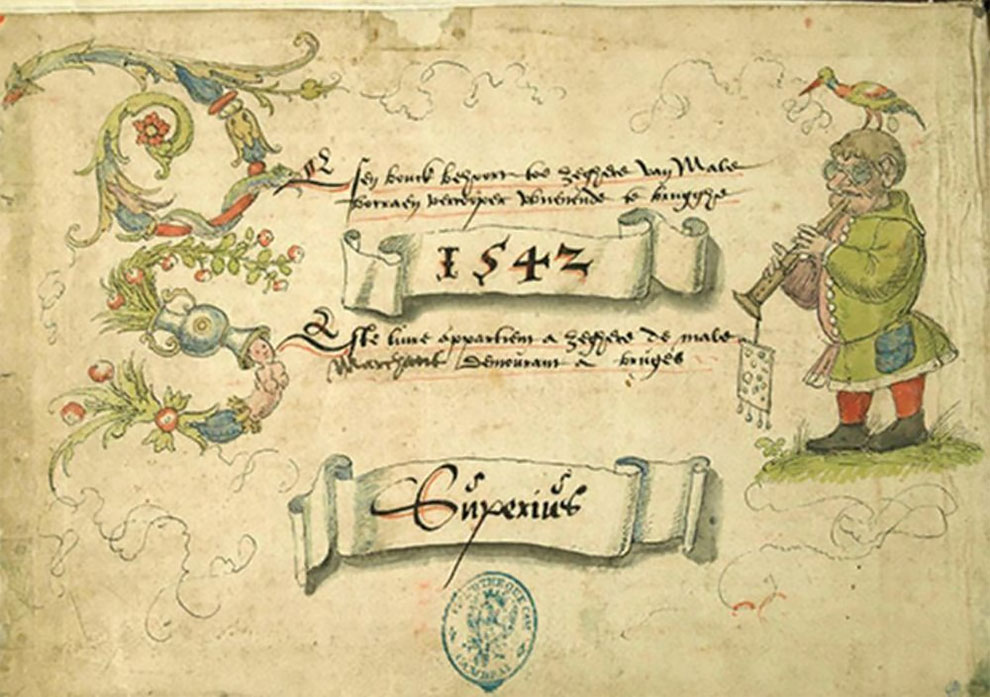
The songbook of Zeghere van Male consists of four complementary part-books: Superius, Altus, Tenor, and Bass. The chansonnier became part of this public collection after the French Revolution, beforehand it was in the Bibliothèque de Saint-Sépulcre, also in Cambrai.
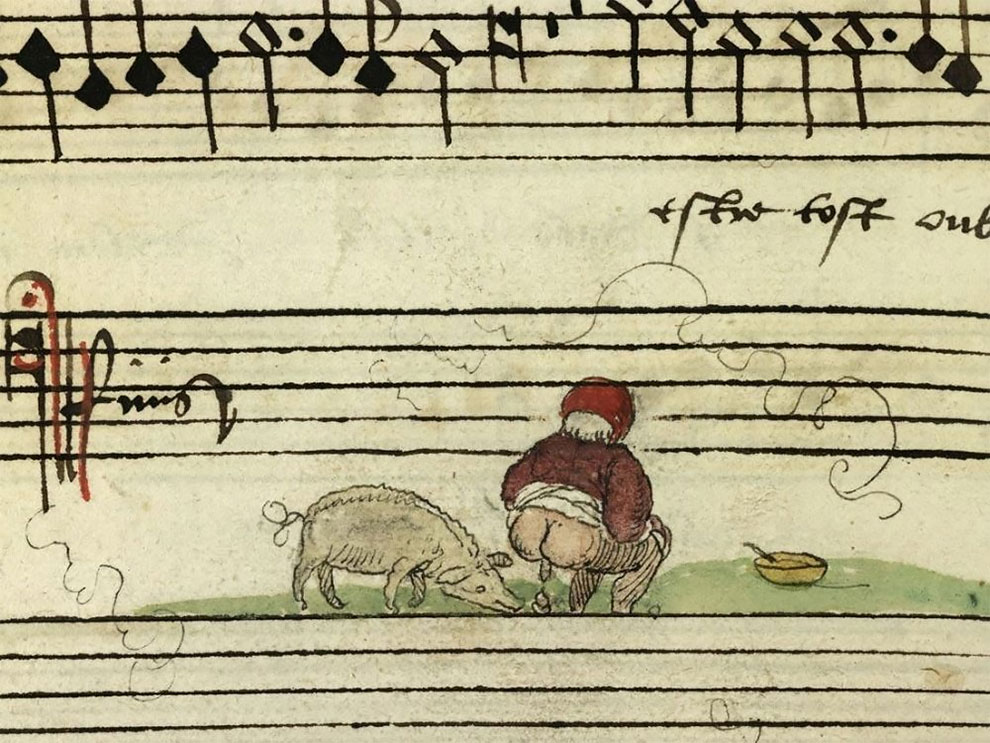
The book contains 229 compositions, extremely varied, some of them present only in this source. The special aspect of this manuscript is its marriage of music, art and culture: drawings adorn each folio. Executed by quill and with lively colors the drawings describe realistic scenes of daily life, leisurely activities, and include animals and monstrous creatures, obscene depictions and vegetal decorations. With mixed elements inherited from the Middle-Ages, the Antiquity and the vogue of the grotesque, they are a testimony of the prevailing taste in Flemish civil society in the first half of the 16th century.
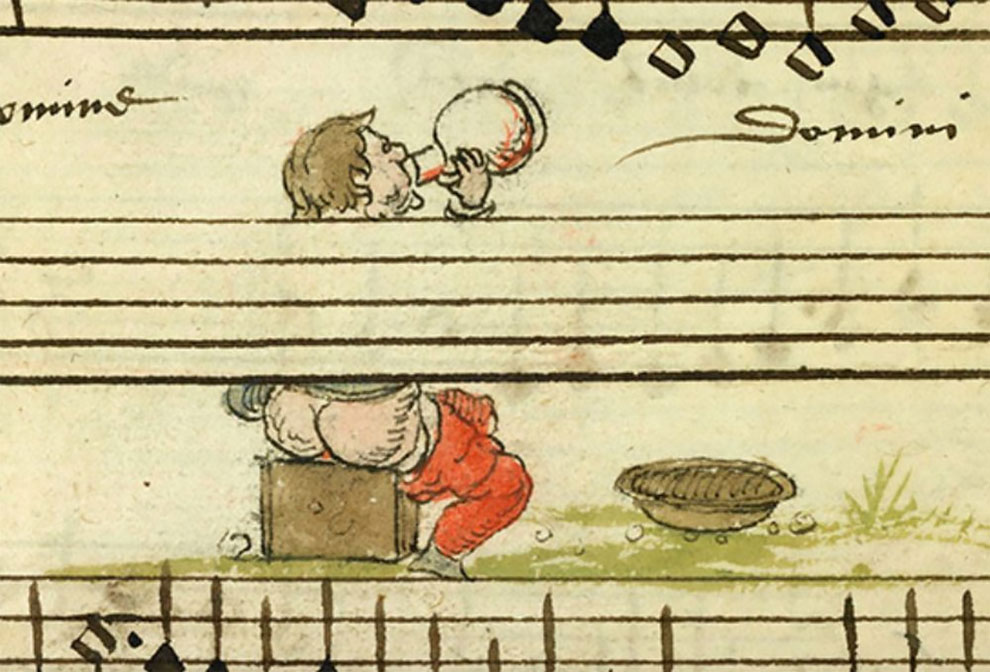
Zeghere van Male (1504–1601) was a Bruges merchant dealing in linen, yarns and dyes. Also a politician, writer and cultured member of the well-to-do bourgeoisie, he is credited with not only preserving an extensive music repertory—13 masses, 2 mass fragments, 64 motets, 125 French secular pieces, 9 Flemish secular pieces, 3 Italian secular pieces, 12 textless pieces by the best composers of the time—but providing an extraordinary backdrop of illustrations, 1200 in all, together with vivid initials, foliage and grotesque characters, that depict all aspects of 16th-c. life: processions, funerals, ceremonial settings, scenes reminiscent of Hieronymus Bosch.
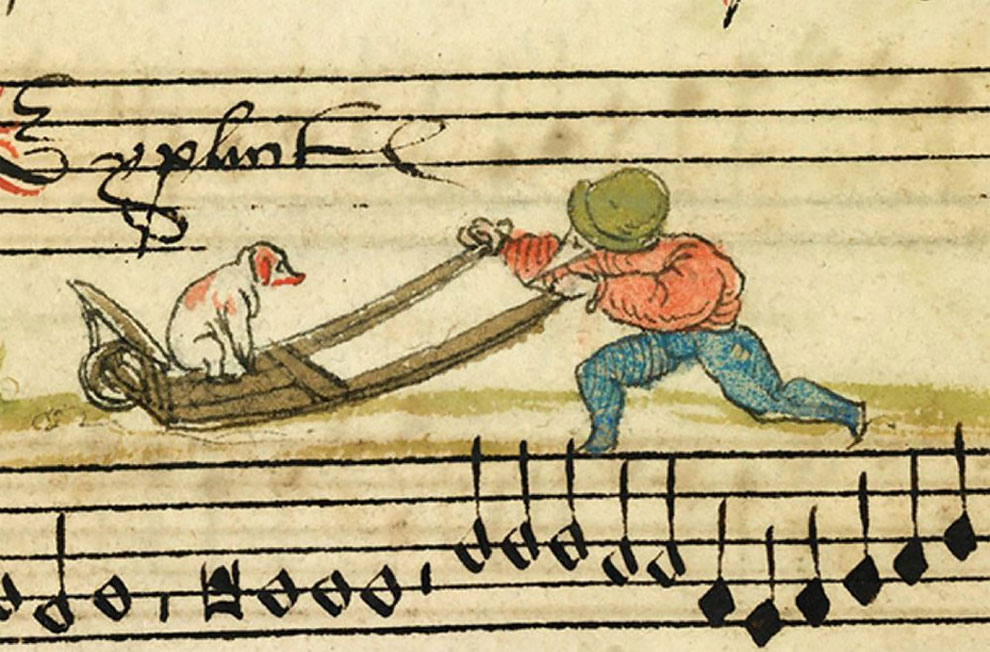
It is interesting to note that Zeghere achieved this feat not via some sort of monumental print (music publishing by 1542 was well established) but in a sumptuously hand-made manuscript, the only way to fully take advantage of the painterly and pictorial arts. The material in this wonderful book is invaluable for musicians, folklorists and art lovers.



